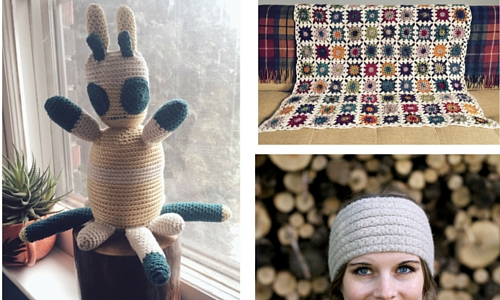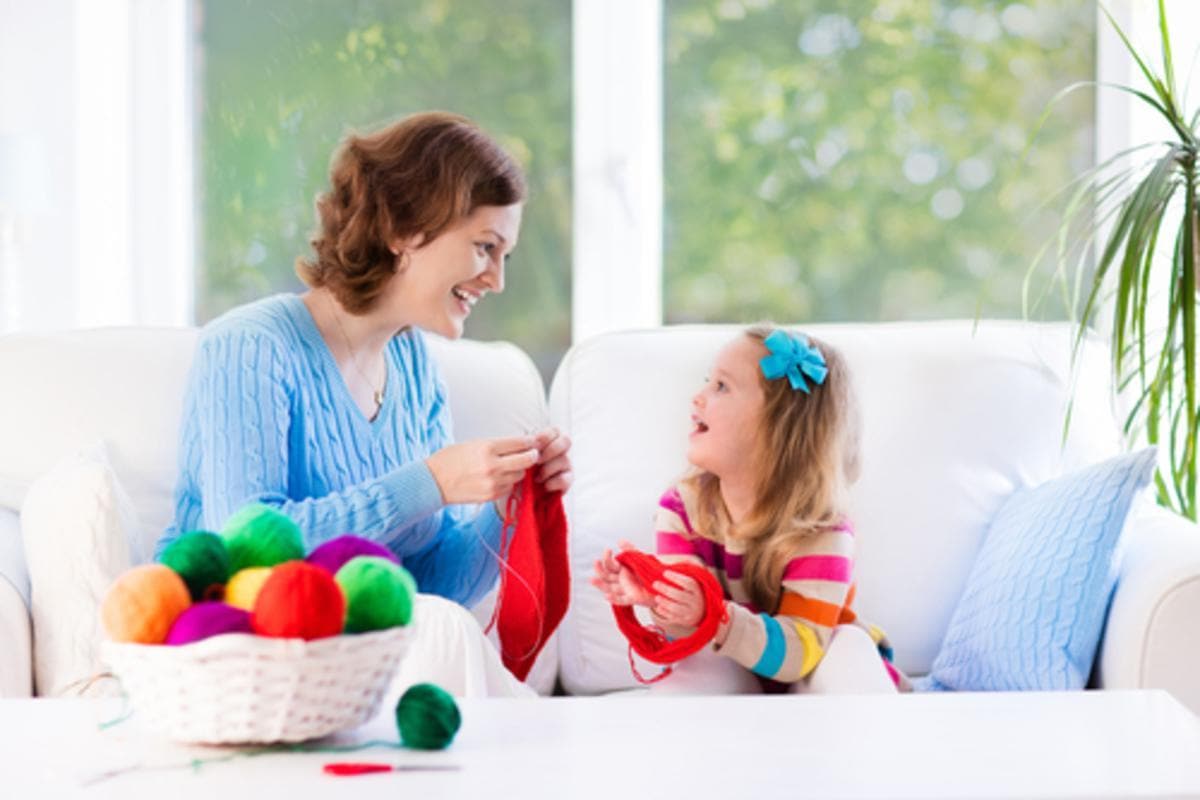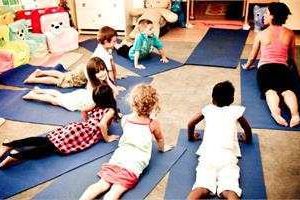When I was young my mother taught me to knit. A few years later a friend acquired the skill of crochet and passed it along to me. After high school I took a hiatus from both, but about seven years ago came back to knitting. In this revival of my craftiness, knitting (and more recently also crochet) has become an essential part of my life – being a knitter is a part of my identity, and it is a rare day that I don’t spend at least an hour knitting.
With baby number one on the way, I know time available for knitting will become more precious and rare, but this has also gotten me thinking about one day teaching my own children to knit. The benefits of hobbies like knitting and crocheting are numerous, and potentially even more so for the youth who partake.
Benefits of knitting
Knitting and crochet have become popular again in the past several years, crossing all generations. While working at a yarn store in Toronto last year, I noticed the regular client-base ranged in age widely, from the very young all the way up to the elderly.
There are a lot of reasons for this resurgence in popularity, not the least of which is that yarn has come a long way; there are hundreds of beautiful and amazing options out there and a wide range of price points. Research is also starting to clearly point out the perks of these fibre crafts. Most studies look at the benefits for adults, so let’s quickly run through why knitting is great for adults.
Fibre arts are productive and creative, and, after the initial learning curve, are often very calming and meditative. Knitting and crochet often also include a social component. Social knitting impacts perceived happiness, communication and social contact. Social ties are incredibly important for community building, which is particularly significant for young families, newcomers, and the elderly.
Many local yarn stores become hubs of activity, with social bonds being made and strengthened through afternoons spent at the shop, knit-nights, and workshops. People help each other learn new skills, troubleshoot problems and mistakes, pick new patterns, and select yarns and colours. The knit community is a strong and wonderful community to belong to.
Research shows that craft activities, such as knitting and quilting, help to decrease the odds of cognitive impairment while aging. Knitters also commonly report that this hobby helps them keep calm and happy, and people who knit frequently report higher cognitive functioning.
Knitting also plays a role in helping to manage chronic pain, in part through its meditative rhythmic movements, and also through building support networks when done socially. There is also early research that shows knitting many be helpful in the clinical management of specific anxieties.
So, in a nutshell, knitting and crochet are productive, creative, and calming, and can also help to reduce stress and anxiety while positively impacting mental functioning. Fibre arts also help people build their community and create stronger social bonds. It helps you and the people around you.

Benefits for kids
There are many ways that kids can benefit from knitting and crochet. In addition to all the ways it will be good for them as adults, when it is learned young it helps build all sorts of skills they are already working on. Math is an inherent part of knitting, as patterns often including counting stitches and rows, as well as figuring out pattern repeats and multiples.
It also requires reading and following instructions, as well as problem solving and troubleshooting. Mistakes happen, and they are a great opportunity to look back at how the error occurred and figure out how to fix it. As a skill that includes both hands and follows a particular rhythmic pattern, it also helps with developing fine motor skills. Once the basic steps are mastered, the repetitive nature of knitting and crochet helps to make it a meditative and calming activity.
It is also a creative hobby, allowing your child to select colours and patterns, and maybe even adapting the pattern to suit their own ideas or needs. Because knitting includes a finished object that your child can use or wear (or gift to somebody), it has its own built-in reward system.
There is so much that can be made with knitting and crochet. It is a hobby that can start very simple and grow and change in complexity as your child masters new skills one at a time. It is also an activity that can be done together and be equally satisfying for both adult and child!
How to teach kids to knit
As all teachers know, the first step is always patience. Learning the initial basic skills can feel awkward and even frustrating. However, as complex as knitting can get, it is all built on just a few basic stitches and skills that are relatively easy to learn and master.
Start with a small project, like a dish cloth. It’s functional and a good size for a first attempt – children (and adults!) can learn the basics and finish the project relatively fast, and hopefully before they get too bored with it.
If you don’t know how to knit yourself, local yarn shops are a great place to start. Most have beginner classes that may be appropriate for children (but check first with the store). You can get private lessons, either one-on-one or with a group of interested friends. It could be a great start for a small birthday party, or an interesting and unique way to spend a PA day afternoon!
In terms of age, it really depends on the kid – their level of interest, ability to concentrate, and relative fine motor skills will determine when it’s best for them to start. Some teachers may have a specific age when they will start giving lessons, so check around.
The knitting world has a serious online presence, so you can get lots of guidance and ideas from knitting parents teaching their kids to knit. There are many very helpful sites (such as Tin Can Knits, TECHknitting, and Purl Soho), and also great large-scale gathering points like Ravelry.com. Here you can find patterns (for free and for purchase) and connect with the online knitting and crochet community, who are a great resource for getting help with any questions you have.
Local yarn shops are also a great place to go for advice and ideas. The people who work at these stores generally love to knit and are excited to help people learn. They can help you with pattern and yarn selections, and get you started with the gear you need.
Knitting is an excellent hobby that comes with so many benefits for adults and children alike. If you and your kids are crafty, or want to be, and are looking for a new past-time, knitting should definitely be on your radar!
Happy Crafting!
Jen Vander Vecht is a writer and soon to be full-time mom. When not crafting four different knitting projects at once, she can be found dumping ingredients into her slow-cooker, walking the dog, watching Doctor Who, or researching cloth diapers.
READ MORE LIKE THIS:
- 6 Real-World Skills Kids Gain Through Acting
- Teaching Kids About Art
- 10 Tips for Getting Kids Involved in Cooking and Meal Prep
Have fun and get creative with our arts and crafts coverage, and find ways to get the kids involved in art by searching our Art Classes and Supplies directory.
Sign up for our newsletters to get parenting and family fun articles delivered to you!


